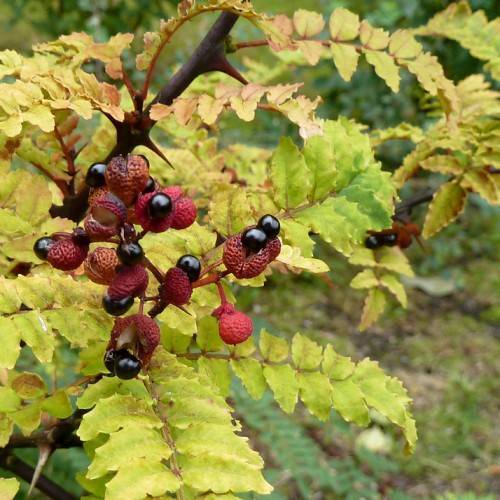
Japanese pepper
Zanthoxylum piperitum
Cycle:
Perennial
Watering:
Minimal
Hardiness Zone:
6
Flowers:
Flowers In Spring
Sun:
Full sun, Part sun/part shade
Fruits:
Fruits In Autumn Ready In
Leaf:
Yes
Growth Rate:
Low
Maintenance:
Low
Drought Tolerant:
Yes
Salt Tolerant:
Yes
Thorny:
Yes
Care Level:
Medium
watering
Japanese pepper should be watered regularly, with its soil kept evenly moist. Water thoroughly when the soil just begins to feel dry, typically once every week or so. During summer months, it may need to be watered more regularly. During winter months, it can be watered a bit less often. In general, it will do well with deep, but infrequent watering.
sunlight
Japanese pepper (Zanthoxylum piperitum) requires at least 6 hours of direct sunlight each day for optimal growth. During the winter or if the plant is inside, the amount of light should be increased to 8-12 hours daily. Position the plant near a south-facing window or use grow lights to provide adequate photosynthesis. The combination of sunlight and air flow will help keep the leaves dry for effective photosynthesis. Make sure to give the plant 4 to 6 hours of indirect sunlight each day as well, to ensure a balance of both light and darkness for regular growth.
pruning
Japanese pepper, or Zanthoxylum piperitum, should be pruned during the late winter and early spring months, directly before new growth begins. Pruning should be done judiciously, as too much can damage the plant. To shape the plant, remove only a few of the longest stems and thin the canopy of branches. Branches should not be cut back into older wood, as this will not allow for the plant to become as full as it could. If needed, it is best to spray a broad-spectrum fungicide on the entire plant after pruning to protect it from disease.
